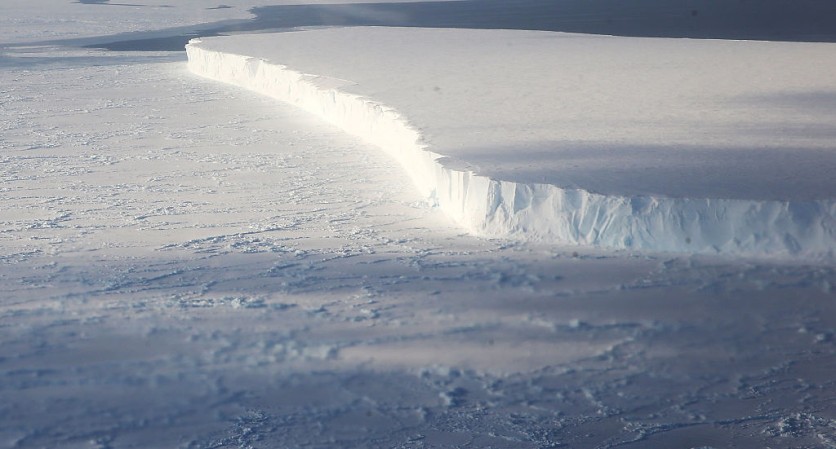A surprising discovery emerged concerning the vast ice formations encircling the Antarctic ice sheet. This research delved extensively into Antarctica's ice shelves, challenging previous assessments that may have overestimated their thickness.

Finding a Way to Tally Ice Sheets in Antarctica
Amid the ongoing global challenge of rising temperatures, the frozen landscapes of Antarctica are confronting significant issues.
A recent study published an unexpected revelation regarding the massive ice formations bordering the Antarctic ice sheet. Interesting Engineering reported that this revelation has the potential to substantially alter our predictions concerning rising sea levels.
This study delved deep into Antarctica's ice shelves, revealing that prior assessments may have overestimated their thickness. Allison Chartrand, the study's lead author and a recent doctoral graduate of the Byrd Polar and Climate Research Center, emphasized the importance of this discovery.
Even a small misestimation, as low as 1%, in the rate of Antarctica's ice sheet melting, could have profound implications, potentially leading to unaccounted-for inches or even feet of sea level rise.
Chartrand added that it is really important to be accurate, especially when dealing with the serious threat of rising sea levels to coastal communities.
Focusing on 75% of Ice Sheet
The study focused on 20 of the 300 different ice-shelf systems that comprise about 75 percent of the Antarctic ice sheet. What they found was surprising: on average, these ice shelves are nearly 6 percent thinner than we previously believed, which amounts to a difference of around 17 meters.
Although this percentage might appear small, Ohio State News reported that it is crucial to understand that ice shelves typically vary in thickness from 50 to 600 meters.
The study emphasized the complexity of assumptions regarding ice shelf thickness. While these assumptions generally hold true on a larger scale, they can vary significantly when dealing with narrower features like valleys or crevasses.
Chartrand pointed out that even small shifts in ice shelf position can have far-reaching consequences. Just a few inches of movement can trigger a chain reaction, leading to the release of thicker ice into the ocean that could lead to coastlines receding by several feet.
The study asserts that while previous assumptions regarding the overall thickness of ice shelves were generally accurate, their precision varied significantly when applied to smaller features like valleys or crevasses.
These smaller structures proved challenging to measure accurately due to their narrow or compact nature. Along with her co-author Ian Howat, a renowned glaciologist and Distinguished University Scholar in earth sciences at Ohio State University, the researchers both initiated their exploration into ice shelf thickness while studying basal channels.
According to Phys.org, these channels are where warmer ocean water carves grooves into the underside of the ice shelf, accelerating the loss of ice mass. This investigation was part of their prior research.
One notable discovery from their study was that the assumptions employed in prior research often led to inconsistencies. In some instances, these assumptions overestimated ice shelf thickness, while others underestimated it.
Related Article : Antarctica Uncovered: Mississippi Mud Core Layers Research Helps Explain Why the South Pole is Frozen

![Apple Watch Series 10 [GPS 42mm]](https://d.techtimes.com/en/full/453899/apple-watch-series-10-gps-42mm.jpg?w=184&h=103&f=9fb3c2ea2db928c663d1d2eadbcb3e52)



